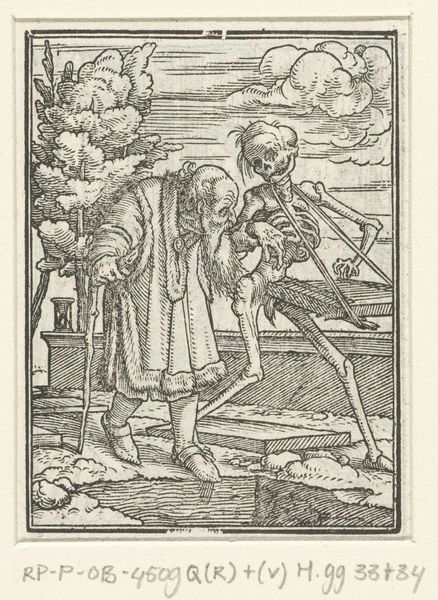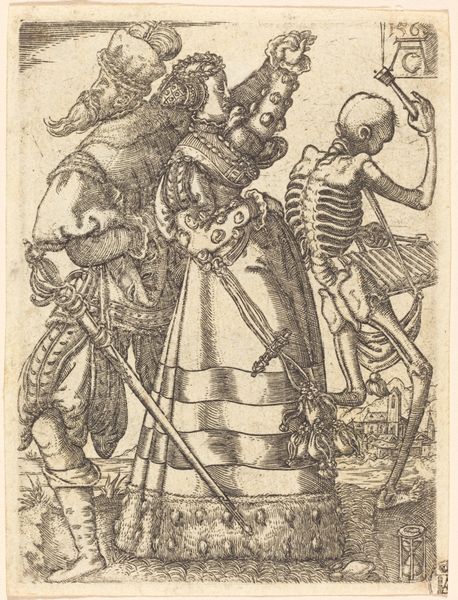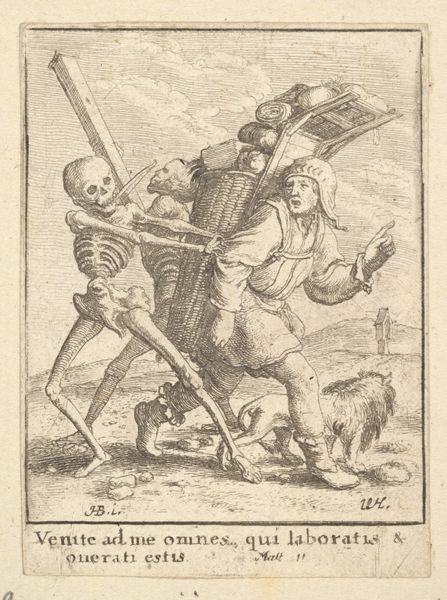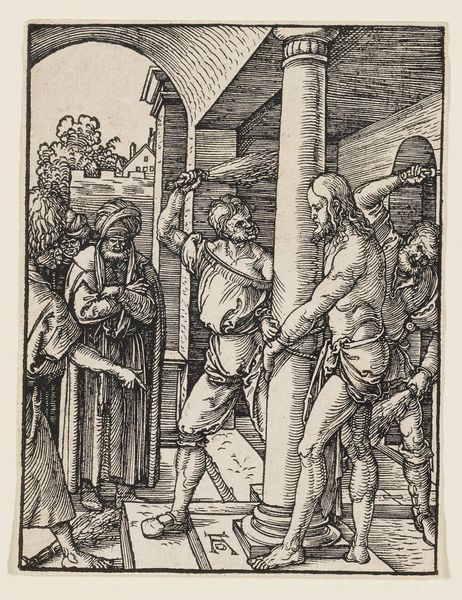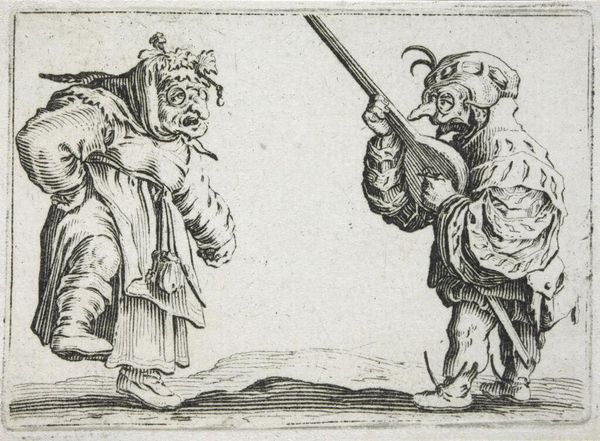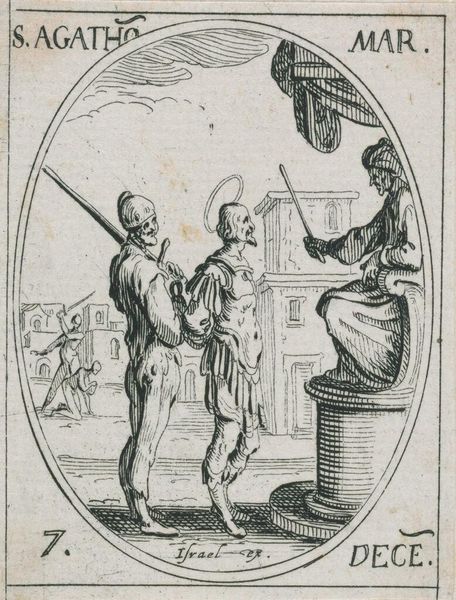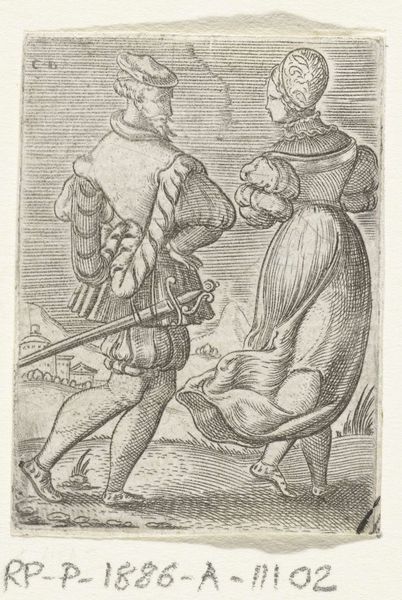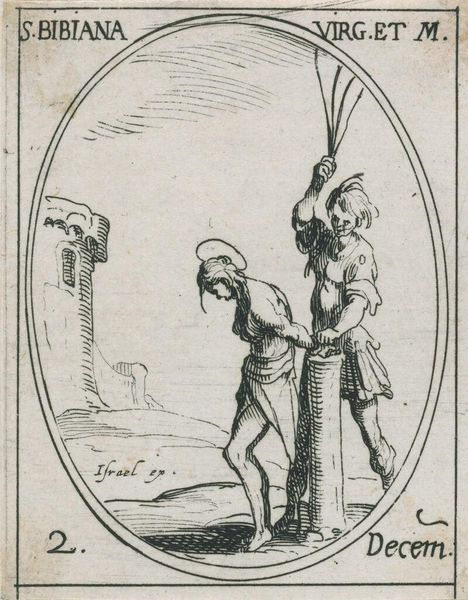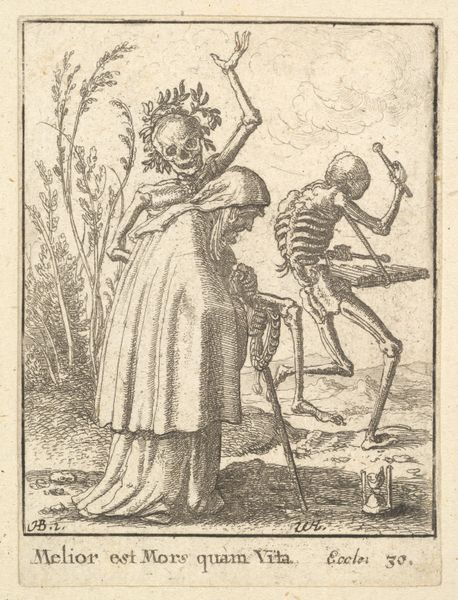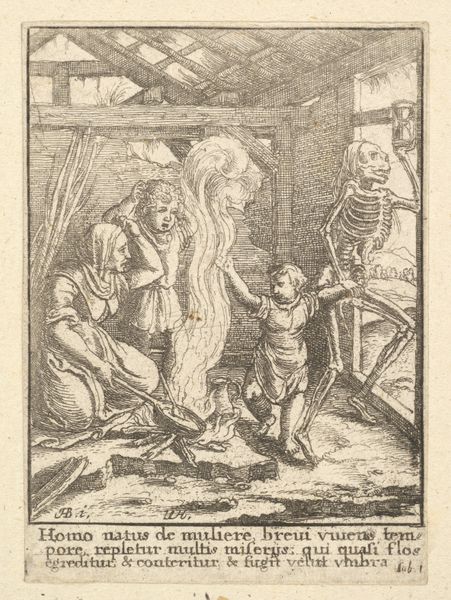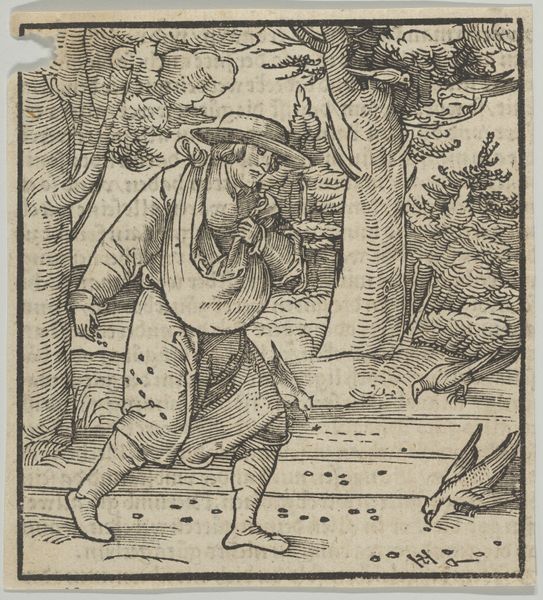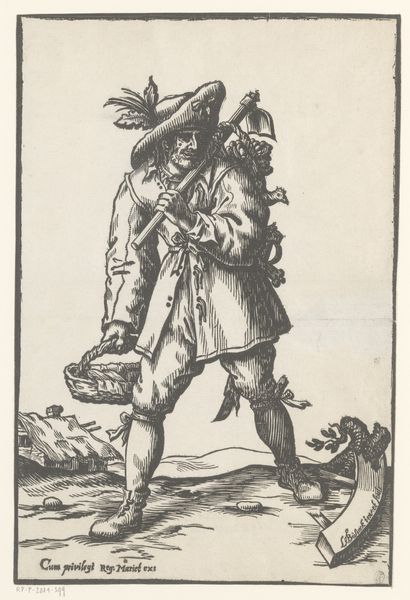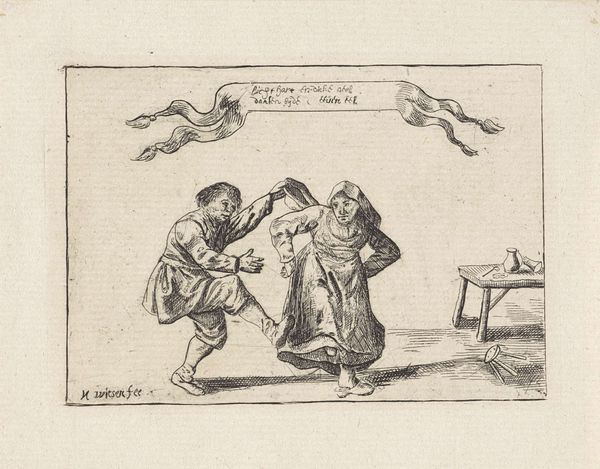
drawing, print, etching, engraving
#
portrait
#
drawing
#
allegory
# print
#
etching
#
death
#
landscape
#
figuration
#
genre-painting
#
history-painting
#
engraving
Dimensions: Sheet: 2 15/16 × 2 3/16 in. (7.4 × 5.6 cm)
Copyright: Public Domain
Curator: This is an etching titled "Old Man, from the Dance of Death" by Wenceslaus Hollar, dating from sometime between 1651 and 1800. The piece belongs to the collection of the Metropolitan Museum of Art. Editor: My immediate impression is somber, though not without a certain grim humor. The stark lines emphasize the frailty of the old man versus the unyielding nature of Death itself. Curator: Hollar masterfully uses the imagery of the "Dance of Death," a popular allegorical theme in the late medieval and early modern periods. Note the skeleton playing a musical instrument, guiding the old man to his tomb. Editor: It is a narrative imbued with social commentary too, one might suggest. This dance, representing death’s indiscriminate nature, invites critical reflection on the hierarchical power structures of its historical period. Notice how the well-dressed, perhaps wealthy, old man cannot escape death. Curator: Indeed. The skeleton and musical instrument are potent symbols. Music, often associated with celebration, becomes a mournful accompaniment here. Editor: It certainly turns expectation on its head, underscoring themes of transience and inevitability of the passage of time for everyone. Also, the detail in the man's garments and the surrounding landscape – particularly the skull resting in the lower right – contrasts with the simple representation of death. This speaks to the concerns about earthly and spiritual concerns. Curator: Observe how Hollar uses hatching and cross-hatching to create depth and shadow, enhancing the allegorical weight. Consider as well how such prints served an educational function. Visuals are critical tools in times when literacy levels are considerably low, communicating lessons. Editor: Precisely. It bridges art history and historical awareness, enabling it to spark reflections on class, morality, and time across a wide cross-section of the population. Death, a constant throughout, levels all in its grasp. Curator: It really encourages me to think about continuity and how symbolic languages persist and adapt over time. Editor: Absolutely. Reflecting on how representations of mortality affect culture helps us contemplate not just history but contemporary ethics.
Comments
No comments
Be the first to comment and join the conversation on the ultimate creative platform.
